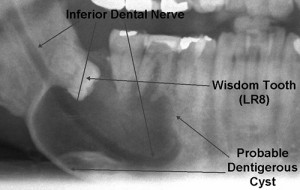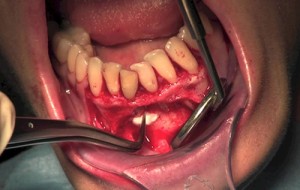Jaw Cysts


Cysts can develop in many places in the body. Around the face and mouth they can develop under the skin, under the mouth lining, within the saliva glands, and within the jawbones.
What will happen at the consultation?
The consultation is a very important part of the treatment, it is an opportunity to meet the consultant and team that will be looking after you. Following an examination and x-rays the consultant will be able to establish a diagnosis. Sometimes when cysts are large or close to other structures it may be necessary to obtain a CT scan which gives a 3-D view and aids the surgery. The consultant will explain what the surgery will entail and what to expect afterwards.
How are jaw cysts removed?
The treatment for cysts is to remove them. This is done by a small incision inside the mouth and removal of part of the bone. Occasionally when cysts are very large it is possible to treat them by surgical decompression. Following the surgery the cyst is sent to a specialist pathologist for examination under a microscope to confirm the diagnosis.

You should expect some discomfort. You should brush your teeth as usual, but keep your toothbrush away from the healing wound for the first couple of days.
To begin with, you should eat soft foods, gradually returning to your usual diet once your jaw feels more comfortable. You may have some facial swelling, bruising, pain or jaw stiffness for up to two weeks. These symptoms are usually at their worst for the first two or three days and then gradually improve.
Most people do not experience any significant problems after having their cyst removed. However contact your dentist, your GP, or us immediately if you develop any of the following symptoms:
- bleeding that does not stop after applying pressure
- difficulty in breathing or swallowing
- severe pain that is not helped by painkillers
- a high temperature
- increasing swelling
